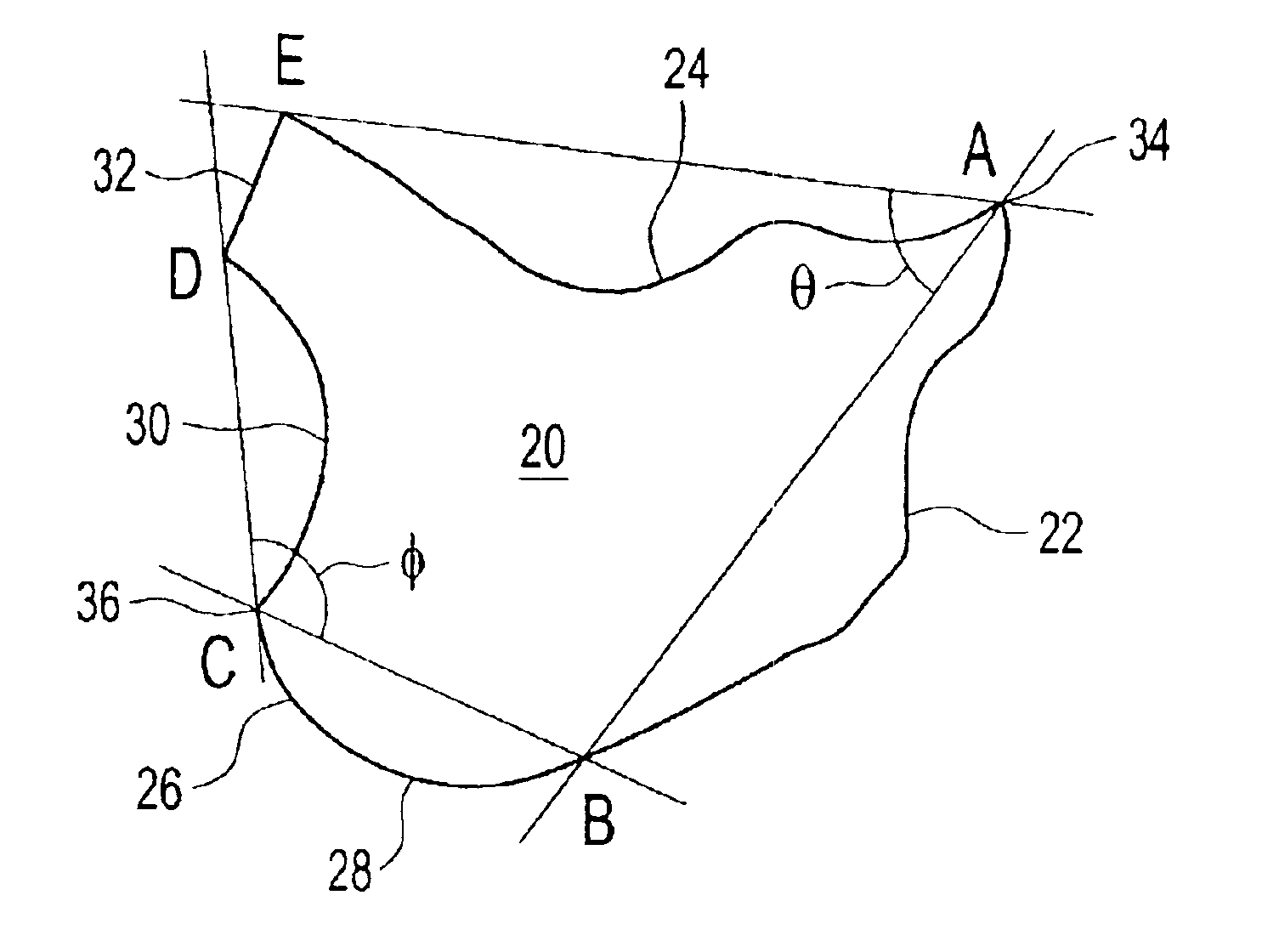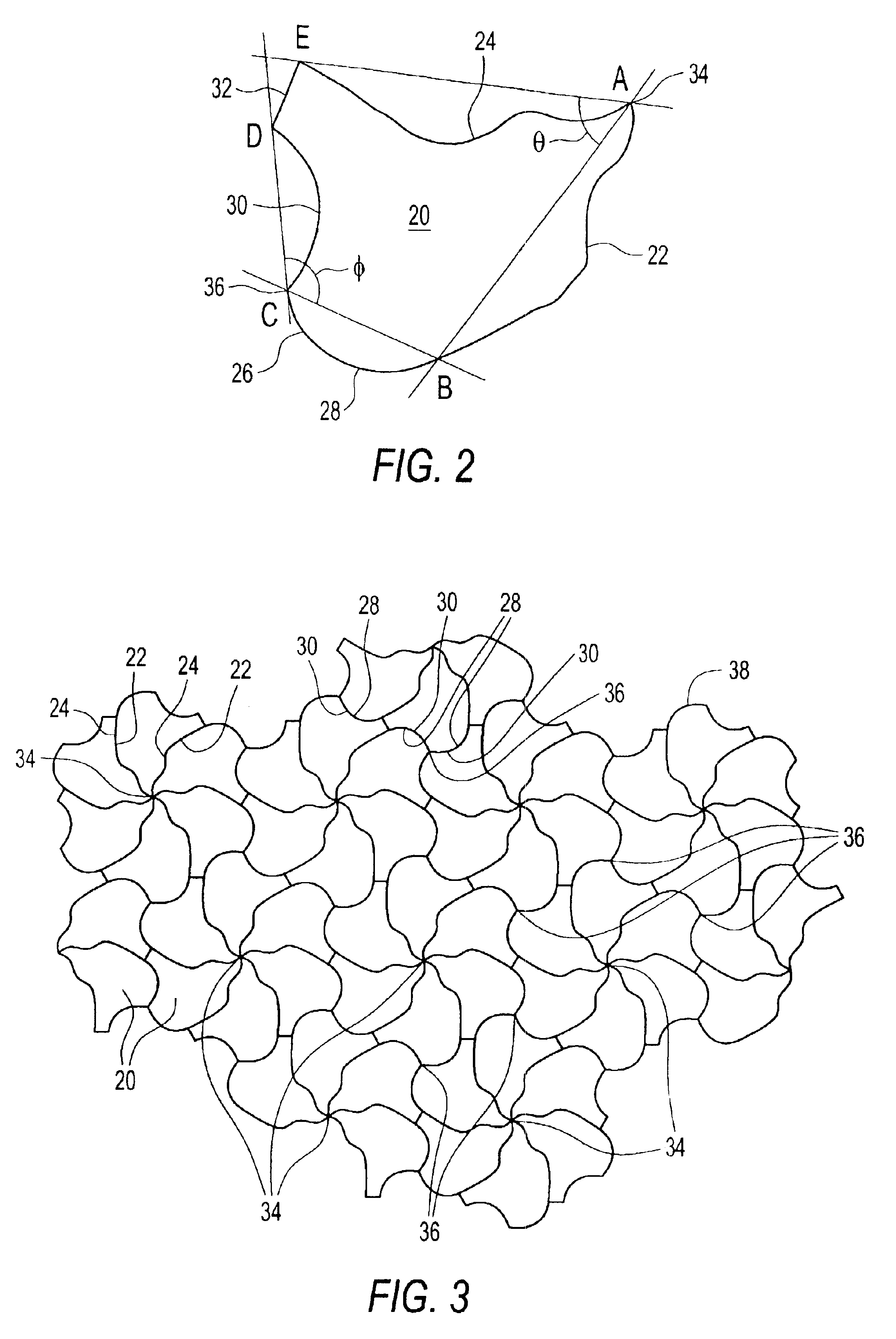Irregular, rotational tessellation surface covering units and surface covering
- Summary
- Abstract
- Description
- Claims
- Application Information
AI Technical Summary
Benefits of technology
Problems solved by technology
Method used
Image
Examples
second embodiment
[0062]FIGS. 11-16 illustrate surface covering units and an exemplary surface covering derived from a rotational tessellation element of the invention. FIG. 11 shows a primary element 120 comprised of six sides, namely, first side 122 extending between points A and B, second side 124 extending between points A and F, third side 128 extending between points B and C, fourth side 130 extending between points C and D, fifth side 131 extending between sides D and E and sixth side 133 extending between points E and F. Together, sides 3 to 6 form transverse side 126. Element 120 has three vertices, namely, first vertex 134, second vertex 136, and third vertex 137. First 122 and second 124 sides are images of one another, radiate from first vertex 134, and are rotationally spaced by an angle θ of 60 degrees. The third 128 and fourth 130 sides are images of one another, radiate from second vertex 136 and are rotationally spaced by an angle φ of 180 degrees. Fifth 131 and sixth 133 sides are i...
third embodiment
[0069]FIGS. 17-22 illustrate surface covering units and an exemplary surface covering of the rotational tessellation element of the invention.
[0070]FIG. 17 illustrates a primary element 220 of the third embodiment. Primary element 220 has a first side 222 extending between points A and B, a second side 224 extending between points A and F. The second side 224 is a rotated image of first side 222 about first vertex 234. The angle θ of rotation is 90 degrees in the third embodiment. Basic element 220 further includes third side 228 extending between points B and C and fourth side 230 extending between points C and D. Fourth side 230 is a rotated image of third side 228 about second vertex 236. The angle of rotation between sides three and four is angle ø which in case of the third embodiment is 90°. Basic element 220 further comprises a fifth side 231 extending between points D and E, and a sixth side 233 extending between points E and F. Sixth side 233 is a rotated image of fifth sid...
fourth embodiment
[0076]FIGS. 23-27 illustrate surface covering units and a surface covering of the rotational tessellation element of the invention.
[0077]FIG. 23 illustrates a primary element 320 of the fourth embodiment. Primary clement 320 has a first side 322 extending between points A and B, a second side 324 extending between points A and F. The second side 324 is a rotated image of first side 322 about first vertex 334. The angle θ of rotation is 120 degrees in the fourth embodiment. Basic element 320 further includes a third side 328 extending between points B and C and a fourth side 330 extending between points C and D. Fourth side 330 is a rotated image of third side 328 about second vertex 336. The angle of rotation between sides 3 and 4 is an angle φ, which in the case of the fourth embodiment is 120 degrees. Basic element 320 further comprises a fifth side 331 extending between points D and E, and a sixth side 333 extending between points E and F. Sixth side 333 is a rotated image of fif...
PUM
 Login to View More
Login to View More Abstract
Description
Claims
Application Information
 Login to View More
Login to View More - R&D
- Intellectual Property
- Life Sciences
- Materials
- Tech Scout
- Unparalleled Data Quality
- Higher Quality Content
- 60% Fewer Hallucinations
Browse by: Latest US Patents, China's latest patents, Technical Efficacy Thesaurus, Application Domain, Technology Topic, Popular Technical Reports.
© 2025 PatSnap. All rights reserved.Legal|Privacy policy|Modern Slavery Act Transparency Statement|Sitemap|About US| Contact US: help@patsnap.com



